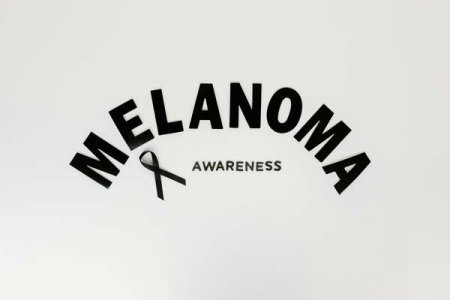Watch before it's too late: Time-lapse video exposes how a small blemish turns deadly
By
KenAlunan
- Replies 5
Disclaimer: This is not intended to be medical advice. For professional guidance, please consult a GP.
As the sun beams down, inviting us to bask in its warmth, it's easy to forget the hidden dangers that come with prolonged exposure.
However, a chilling time-lapse video released by a clinic in the United States served as a stark reminder of the risks associated with sun damage, especially as we approach the summer season.
The video, created by Head and Neck Surgeon Dr Chris Chang illustrated a frightening transformation.
Dr Chang said, ‘Using generative (artificial intelligence), this time-lapse sequence shows how melanoma skin cancer develops over ten years.’
‘Starting with normal skin, slow progression to stage four melanoma is shown.’
The hypothetical time-lapse condensed a decade of change into mere moments, showing the gradual growth of melanoma in a way that would be impossible to capture in real life.
Doctors seized this opportunity to emphasise the importance of sunscreen in reducing the risk of skin cancer, which can be triggered by UV damage from the sun.
According to the Australian Institute of Health and Welfare, Melanoma was responsible for 11 per cent of all cancer diagnoses in Australia, with over 18,000 new cases diagnosed in 2023.
Interestingly, while cases are on the rise by about three per cent each year among women over 50, diagnoses among younger adults are falling.
This trend was attributed to increased sunscreen use among the younger population, who are more proactive in protecting their skin to prevent aging.
Physicians advocated for early detection by employing the ABCDE acronym, which stands for Asymmetry, Border, Color, Diameter, and Evolving.
These criteria help identify suspicious moles or skin changes that could indicate the development of melanoma.
Treatment for melanoma typically involves surgical removal of the affected skin.
However, if the cancer has spread, more aggressive treatments like chemotherapy may be necessary.
You can watch Dr Chang’s video here:
Source: YouTube / @fauquierent
The prognosis for melanoma is significantly better when caught early, with more than 99 per cent of patients surviving if diagnosed in the initial stages.
This survival rate drops dramatically to 75 to 80 per cent for those diagnosed at later stages.
Melanoma poses a significant concern for many individuals. This couple's dedicated efforts to combat and treat the disease have earned them prestigious recognition. You can read more about the story here.
 Have you had a skin check recently? Do you have any tips for staying sun-safe? Share your thoughts and experiences in the comments below!
Have you had a skin check recently? Do you have any tips for staying sun-safe? Share your thoughts and experiences in the comments below!
As the sun beams down, inviting us to bask in its warmth, it's easy to forget the hidden dangers that come with prolonged exposure.
However, a chilling time-lapse video released by a clinic in the United States served as a stark reminder of the risks associated with sun damage, especially as we approach the summer season.
The video, created by Head and Neck Surgeon Dr Chris Chang illustrated a frightening transformation.
Dr Chang said, ‘Using generative (artificial intelligence), this time-lapse sequence shows how melanoma skin cancer develops over ten years.’
‘Starting with normal skin, slow progression to stage four melanoma is shown.’
Dr Chang's creation is important because it addresses a common issue, many individuals do not notice the early stages of skin cancer until it has progressed significantly.
The hypothetical time-lapse condensed a decade of change into mere moments, showing the gradual growth of melanoma in a way that would be impossible to capture in real life.
Doctors seized this opportunity to emphasise the importance of sunscreen in reducing the risk of skin cancer, which can be triggered by UV damage from the sun.
According to the Australian Institute of Health and Welfare, Melanoma was responsible for 11 per cent of all cancer diagnoses in Australia, with over 18,000 new cases diagnosed in 2023.
Interestingly, while cases are on the rise by about three per cent each year among women over 50, diagnoses among younger adults are falling.
This trend was attributed to increased sunscreen use among the younger population, who are more proactive in protecting their skin to prevent aging.
Physicians advocated for early detection by employing the ABCDE acronym, which stands for Asymmetry, Border, Color, Diameter, and Evolving.
These criteria help identify suspicious moles or skin changes that could indicate the development of melanoma.
Treatment for melanoma typically involves surgical removal of the affected skin.
However, if the cancer has spread, more aggressive treatments like chemotherapy may be necessary.
You can watch Dr Chang’s video here:
Source: YouTube / @fauquierent
The prognosis for melanoma is significantly better when caught early, with more than 99 per cent of patients surviving if diagnosed in the initial stages.
This survival rate drops dramatically to 75 to 80 per cent for those diagnosed at later stages.
Melanoma poses a significant concern for many individuals. This couple's dedicated efforts to combat and treat the disease have earned them prestigious recognition. You can read more about the story here.
Key Takeaways
- A time-lapse video showed the transformation of a minor dark spot into stage 4 melanoma over a decade, using generative artificial intelligence technology.
- Released by a clinic in the United States, the video aimed to raise awareness about the early stages of skin cancer and the importance of sun protection.
- Despite the hypothetical nature of the time-lapse, it highlighted the reality that many don't notice their skin cancers until later stages, underscoring the need for regular skin checks using the ABCDE guide.
- While melanoma diagnoses are decreasing among younger adults due to better sunscreen use, overall cases continue to rise, especially among women over 50. Early detection significantly increases survival rates, whereas late-stage diagnoses have lower five-year survival chances.








